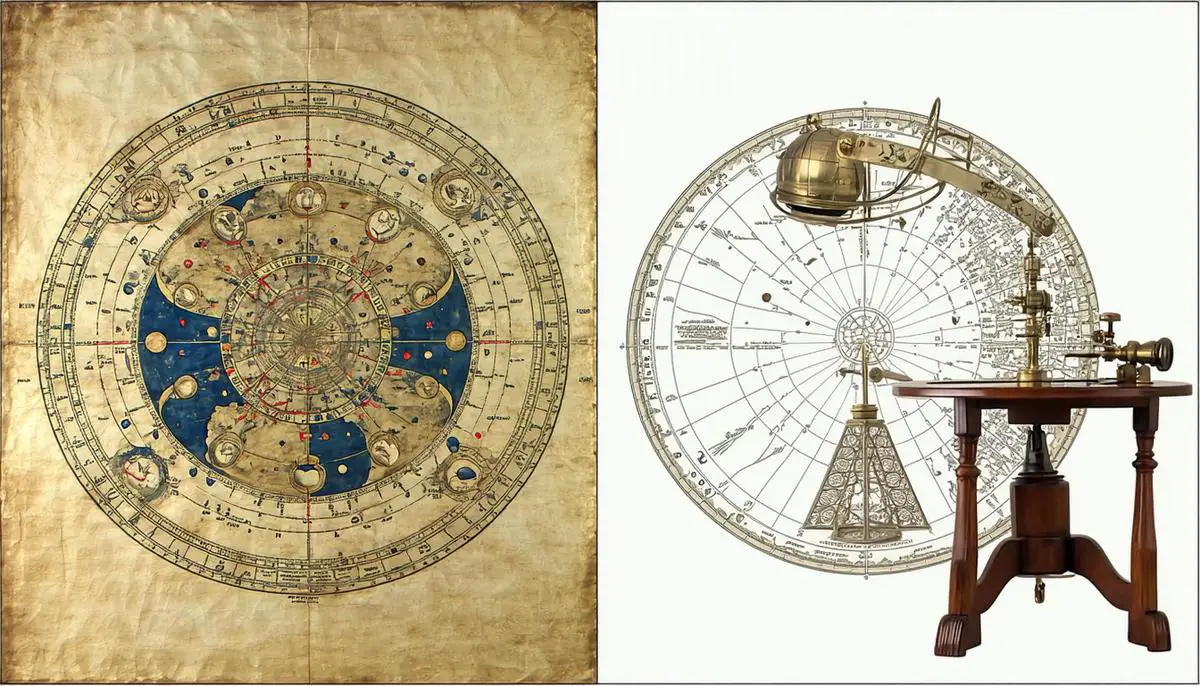The Evolution of Astrology and Astronomy
Astrology originated in ancient Babylonia roughly 2,500 years ago. The Babylonians believed celestial bodies influenced the fortunes of kings and nations. Later, the Greeks introduced natal astrology to the Western world, suggesting an individual's fate was tied to the celestial arrangement at their birth.
Ptolemy, a key figure in this field, combined astrology with astronomy by compiling texts emphasizing how celestial events affected earthly affairs. Though astrology initially intertwined with the scientific study of the heavens, leading figures like Johannes Kepler began to separate the two.
The main split between astrology and astronomy began in the 19th century. As new planets like Uranus and Neptune were discovered, astronomers conceded that celestial bodies held no sway over earthly lives. They began studying the universe using physics, while astrology transitioned into entertainment rather than scientific inquiry.
Despite this shift, the cultural impact of astrology remains. People still seek solace in horoscopes and zodiac signs, even as modern astronomers dismiss it as pseudoscience. However, constellations and zodiac signs endure as parts of our night sky observations.
In 1922, the International Astronomical Union recognized 88 constellations, lending both practical and navigational use to these celestial patterns. Astronomical advancements have revealed that stars within constellations are vastly distanced from one another, though they appear clustered due to our two-dimensional perspective from Earth. For example, the famous Orion's Belt stars are separated by hundreds of light-years.
The historical relationship between astrology and astronomy demonstrates humanity's enduring curiosity about the skies above, displaying a fascinating evolution from shared roots to distinct disciplines.

Constellations: From Myth to Science
Constellations have long served as celestial maps, cultural symbols, and the basis for stories about the cosmos. In antiquity, these stellar patterns were often interwoven with mythologies and cultural tales. For instance, the constellation Leo is linked to Hercules' labors, while Orion represents the legendary hunter.
As our understanding of the universe grew, the mythological lens began to give way to a more scientific perspective. The International Astronomical Union's formal recognition of 88 constellations in 1922 solidified an astronomical framework that remains useful today. These officially named constellations help astronomers chart the heavens with precision, providing structure to the vast night sky.
The precession of the equinoxes, caused by Earth's wobbling axis, affects the apparent movement of these star patterns over long periods. This phenomenon means that the original alignment of constellations with zodiac signs no longer holds—someone born under the sign Aries might find that the sun was actually in Pisces at their birth, from an astronomical point of view.
Nonetheless, constellations continue to play a significant role in both scientific and cultural contexts. Their engaging histories and essential roles in the development of navigation techniques underscore how these stellar patterns guide us in understanding our place within the universe. Through myth and science, constellations bridge the gap between our planet-bound existence and the vast expanse of space, fostering a deep-seated curiosity that propels both storytelling and discovery.
In tracing the journey from ancient myths to modern science, we see how humanity's gaze has always been drawn skyward. Constellations and celestial bodies continue to captivate us, connecting our past stories with present discoveries. This enduring curiosity reflects our desire to understand not just the universe but also our place within it.
- Ruggles C. Ancient Astronomy: An Encyclopedia of Cosmologies and Myth. ABC-CLIO; 2005.
- Campion N. A History of Western Astrology Volume II: The Medieval and Modern Worlds. Continuum; 2009.
- Ridpath I. Star Tales. Lutterworth Press; 2018.
![]()